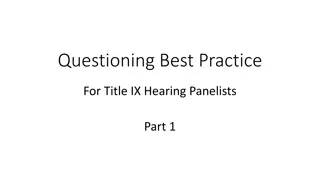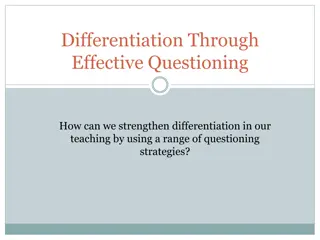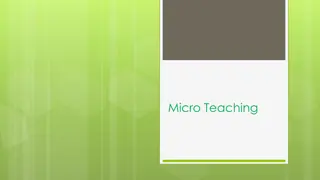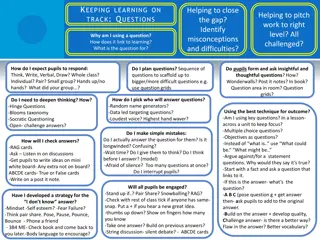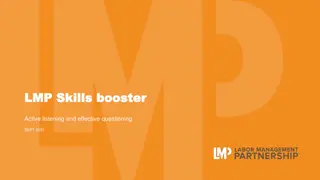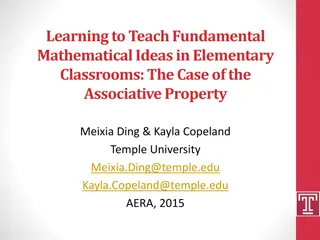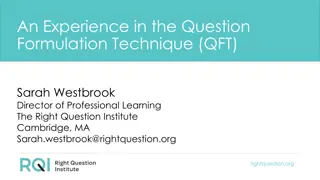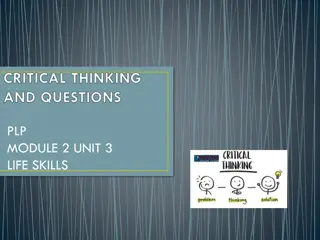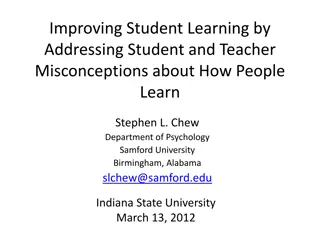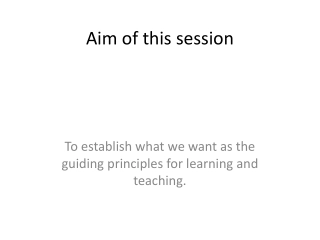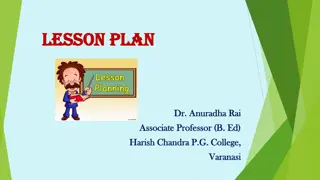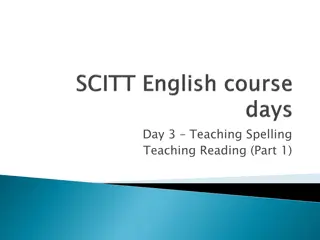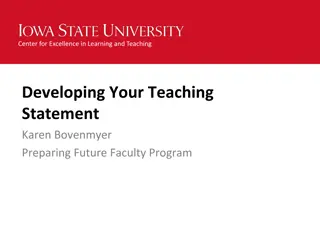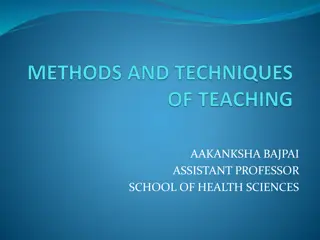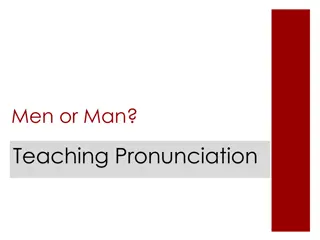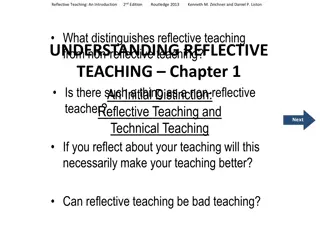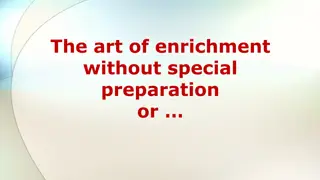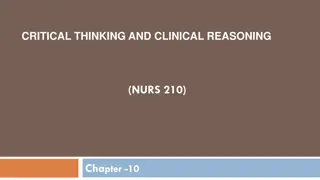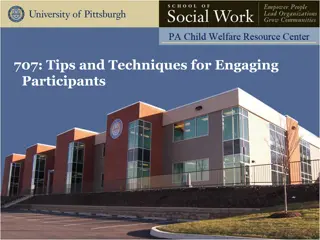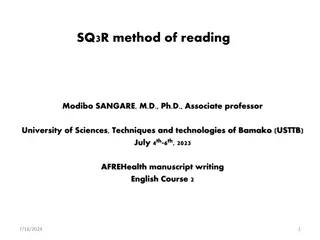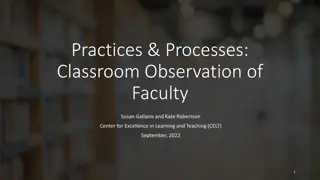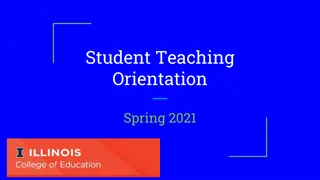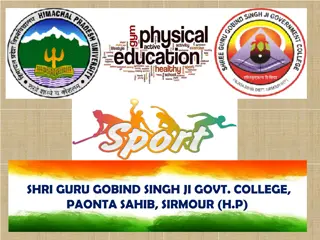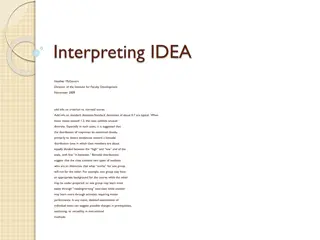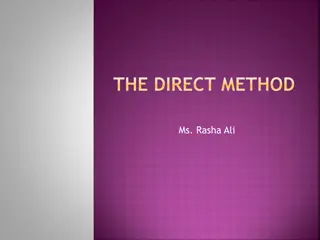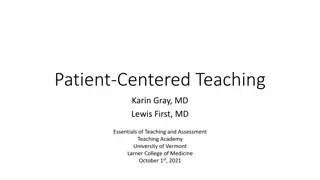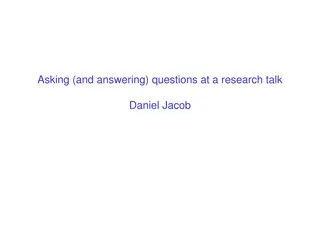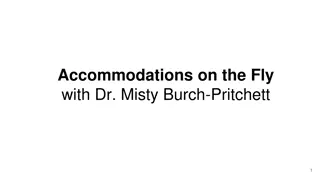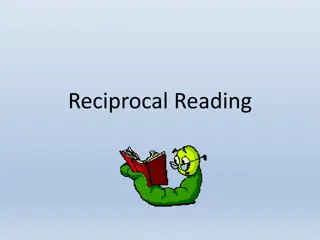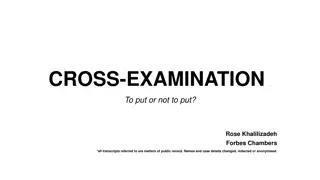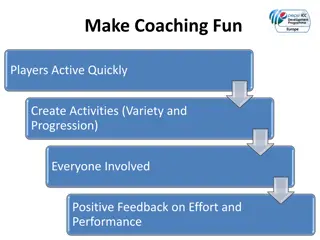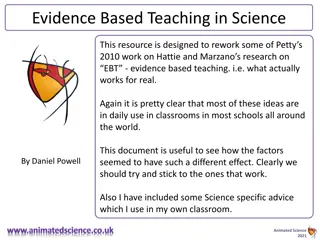Effective Questioning Techniques in Teaching
Techniques involved in effective questioning in teaching include asking questions to the whole class, proportionate distribution of questions, providing wait time for students to answer, sequencing questions from simple to complex, and avoiding excessive questioning. It is important for teachers to change question structures appropriately, cover all students including back benchers, and communicate effectively during questioning sessions.
Download Presentation

Please find below an Image/Link to download the presentation.
The content on the website is provided AS IS for your information and personal use only. It may not be sold, licensed, or shared on other websites without obtaining consent from the author. Download presentation by click this link. If you encounter any issues during the download, it is possible that the publisher has removed the file from their server.
E N D
Presentation Transcript
SUBJECT READING AND REFLECTING
TOPIC Techniques involved in Questioning Incharge Sunita Rani
Techniques involved in Questioning Ask the questions to whole class:- Teacher need to ask the whole class while asking question. Asking to only one student or to particular group only those will remain active, think and ready to respond. but if the teacher ask question to whole class, the whole class will ready to respond.
Proportionate distribution of question:- Teacher should ask question to different student. It is wrong if the teacher repeatedly ask questions to some child or particular group of children. Mostly teachers ask question to intelligent students and get correct answer. It is teacher who has to see that no students should remain unlearnt.
Wait time:- Every students should be given time to answer. Wait time is the mental activity when students think, recall, analyses, compare, evaluate, synthesis, process information in mind. One time at a time:- Sometime in fluency of lecture, explanation, describing situation teacher ask more than one question at a time. It confuse teacher and reduce effectiveness at questioning.
Sequencing of questions:- The teacher should start with simple questions to then move to difficult ones. Once the students answers the simple questions then complex question should be asked. Repetition of questions:- Generally, the questions are not repeated again and again. But if the students are not able to answer any question, the from of question or the language of the question should be moulded so that students can able to understand the question and answer it.
Change in structure:- Change in structure may lead to change in meaning. This may confuse learner. Before changing the structure the teacher should the level and class of the students. Avoid excessive question:- The teacher should not ask excess questions. More questions will make the learners confused about the text.
Cover back benchers:- The teacher should not focus on back benchers only. But the teacher should ask equal proportion of questions to back benchers. Proper communication:- Like other teaching techniques, questioning also demands adequate communication. For this, he need to have proper eye contact.
Reinforcement:- The teacher should ask questions respectfully with pleasant gestures. If any children ask wrongly, the teacher should not scold him/her rather than the teacher should motivate him/her to answer it correctly next time. Speed of questioning:- The teacher should ask questions in a uniform pattern. The teacher s speed of questioning neither too slow nor too fast. The children must understand the question as well as answer. Use pauses:-Using silence is a powerful way of delivering questions. The teacher should take some pause within the questions so that students should understand the previous one and get themselves for the next one.


